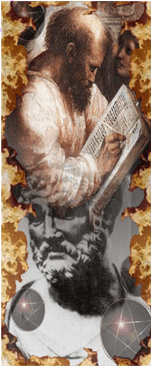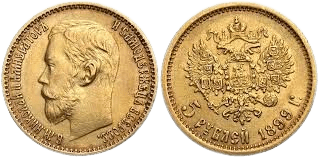Five-Pointed Star or Pentagram
Pythagoras was the first of the great teachers of ancient Greece. Born in 580 B.C., Pythagoras became one of the most well-known philosophers and mathematicians in history. Creating the Pythagorean Brotherhood, his teachings greatly influenced Socrates, Plato, and Aristotle. Pythagoras is considered the first pure mathematician; he also founded a community/society based on religion and science. He is most widely known as the author of the Pythagorean Theorem.
The pentad also refers to the well-known five-point star. The pentad arises in the existence of our five fingers and five toes, the symbol that wards off evil and a symbol of power and immunity. Because of the importance of the pentad, the construction of the symbol was first kept secret from society. The pentad was used as a secret sign among the Pythagoreans for them to distinguish themselves and recognize other members. The pentad’s symbolism can be directly related to the Divine Proportion. And the regeneration of the pentad is related to the value of phi (Ф). The image of the pentad is found in nature in leaves and flowers. The Greeks believed each point of the pentad to represent an element: water, earth, air, fire, and idea. Early Christians used the pentad to represent the five wounds of Christ. In the Jewish kabbalistic tradition, which borrows many Pythagorean ideas, the pentagram represents the five upper sephiroth on the Tree of Life- five numbers, being indivisible by any but themselves, which represent pure archetypal forces: justice, mercy, wisdom, understanding, and transcendent splendor.
The symbol of the Pythagoreans was the star pentagon or pentagram, a five-pointed star formed by drawing the diagonals of a regular pentagon. The five-point star or "pentagram" when upright symbolizes the five elements of earth, air, fire, and water, with the top point symbolizing spirit.
The Tetraktys of Pythagoras -- composed of ten dots arranged in four rows to form a triangle -- was the sacred symbol upon which the Pythagoreans took their most binding oath:
"I swear by him whom the Tetraktys found,
Whence all our wisdom springs and contains
Perennial Nature's fountain, cause, and root."

The Tetractys is a symbol composed of ten dots in an upward-pointing triangular formation. It was a sacred pattern for the school of philosophers who followed the teachings of the Greek sage Pythagoras (who lived 6th century BC). They used the Tetractys to swear their oaths upon, in much the same way that modern Christians swear oaths upon the Bible.
Jewish Kabbalists were strongly influenced by Greek philosophy. They created their own version of the Tetractys using the Hebrew letters of Tetragrammaton (IHVH), the divine name of four letters. A Hebrew Tetractys, in a similar way, has the letters of the Tetragrammaton (the four-lettered name of God in Hebrew scripture) inscribed on the ten positions of the Tetractys, from right to left. It has been argued that the Kabbalistic Tree of Life, with its ten spheres of emanation, is in some way connected to the Tetractys, but its form is not that of a triangle.




 Home
Home